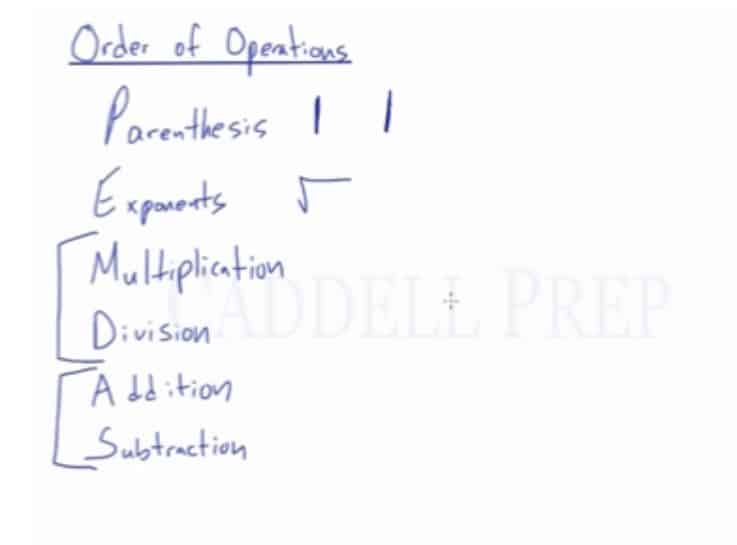In this video, we will be learning how to solve equations using order of operations.
Use PEMDAS:
Parenthesis
Exponent
Multiplication
Division
Addition
Subtraction
Examples of Order of Operations
Example 1
First, we will solve the number with exponent
Then, we will divide 28 by 4
Now, we add the two numbers
Therefore, the answer
Example 2
First, we subtract the numbers inside the parenthesis
(16-4)+3\times2=(12)+3\times2
Then, we multiply 3 and 2
(12)+3\times2=12+6
Now, we add 12 and 6
Therefore, the answer
After you finish this lesson, view all of our Pre-Algebra and Algebra lessons and practice problems.
Video-Lesson Transcript
In this video, we will be learning how to solve equations using the order of operations.
PEMDAS stands for:
Parenthesis
Exponent
Multiplication
Division
Addition
Subtraction
Multiplication and division can be interchanged. Whichever of the two comes first.
Same is true for addition and subtraction.
Square root has the same order as the exponent.
While the absolute Value Bars have the same order as the parenthesis.
Let me give you an example.
We have
First, do the operation inside the absolute value bars first.
Some would think that it would be
But it is not.
Let’s do
Here, we should compute the first.
We will come up with
So it will be
And the answer is
Notice that if we keep this
The answer wouldn’t be the same.
Let’s move on to square roots.
We have
We can’t just add these together.
We have to do the Exponent first.
So, it’s going to be
Add these and we’ll have
So there you have it.
Again, treat square root with the same order as exponent.
And absolute value bars with the same order as the parenthesis.



